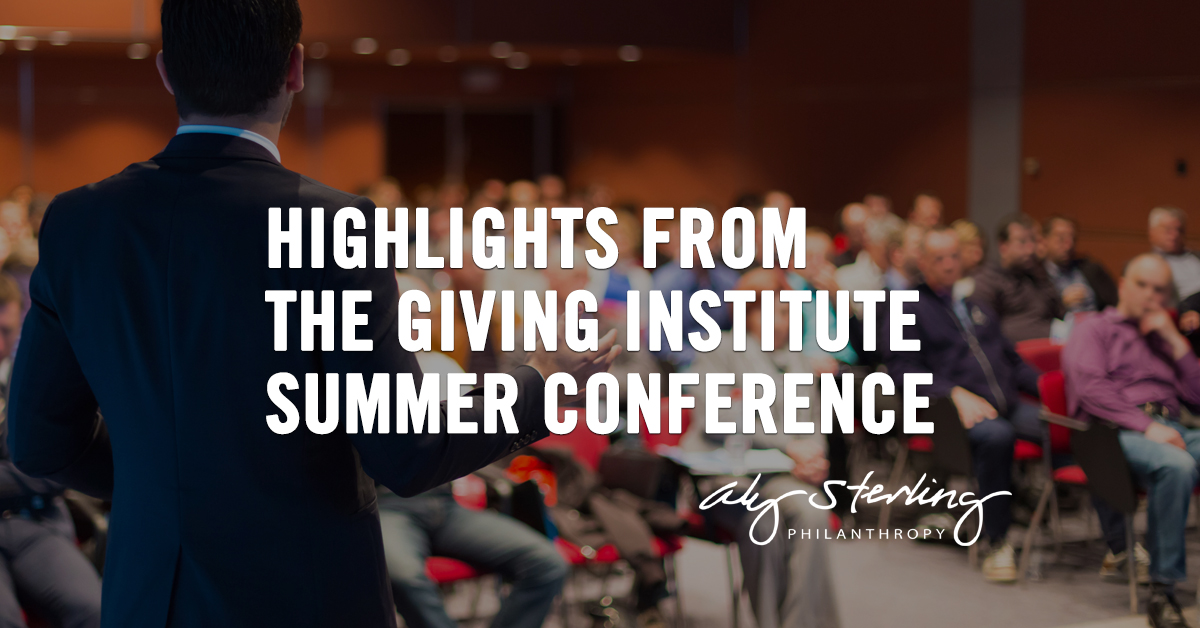
Last week I had the good fortune of attending a summer conference in Boston hosted by the Giving Institute, the organization behind Giving USA.
It was an outstanding experience!
The speakers were one-of-a-kind and the content was entertaining, weighty and meaningful. I was excited to meet other advisors to the nonprofit sector and talk shop: how to stay current and keep improving our services to drive innovation and real change in communities.
Below are highlights from my notes but, believe me, there was so much more! Check out the Giving Institute at givinginstitute.org for more information about Giving USA and this worthy organization.
Giving Institute summer conference highlights:
A dialogue with Boston’s leading fundraisers from MIT, Dana-Farber Cancer Institute and Harvard.
This was fascinating. Here’s what they’re saying (and these fundraisers – all three women – are seasoned pros):
- There is an explosion in asking and giving – more activity than they’ve ever seen.
- There are more “interdisciplinary” projects than they’ve ever seen – i.e., cross-program/organization collaborations – and donors love it.
- The mega donors with whom they’re working are quick to decide what they want to fund because: a) they’ve already done their research and b) because they desire results and will make sure the money follows.
- They’re seeing a constant cycle of campaigning. Yes, it can create donor fatigue, but if managed well, you aren’t tapping the same people each time, but keeping the energy always high!
- Everyone wants more money to fuel the “engine,” aka operations/infrastructure. But it’s still hard to earn.
Roger Doughty & Ben Franscisco Maulbeck – LGBTQ foundation leaders
- 5% of the US adult population falls into the LGBTQ category.
- From 1978-2013, funding from foundation sources has gone from nearly zero to $129 million annually. While this sounds like impressive progress, it represents only 24 cents of each $100 given by all foundations.
Jacob Harold, CEO, Guidestar
- There are two elephants in the philanthropic room: Some nonprofits are better than others and Some donors are better than others.
- There should be no numbers provided in our work without stories; and no stories without numbers.
- We encourage the general public to judge a nonprofit based on their 990 filing. How many of you would like someone to derive your life from your 1040 filing?
- Too many of our nonprofits use pie charts to communicate “value.” It’s time to ban the pie chart as a proxy for performance!
- Use the term “organization” more than “nonprofit.” You are running a business/company and the word nonprofit makes board members forget their logic.
Matt Nash, SVP, Fidelity Charitable Foundation (The biggest charitable foundation after the Gates Foundation)
- 52% of all Fidelity donor-advised fund (DAF) holders have never consulted with their advisors as to where to charitably give. These donors don’t ask for help in this area.
- 92% of DAF donors provide their contact info to the nonprofit they give to (only 8% don’t – this busts a myth).
- The average age of a DAF investor is 54.
- Average DAF balance is $16,097. The average grant size is $4,139 and in 2014 the average number of grants made annually, per account, was 8.3.
Henry Berman, CEO, Exponent Philanthropy
Small foundations are interested in:
- Multi-year funding to illustrate impact.
- Looking at things with a compass versus a GPS. In other words, the framework and general direction a nonprofit is moving in is important, they don’t have to produce a mile-high strategic plan.